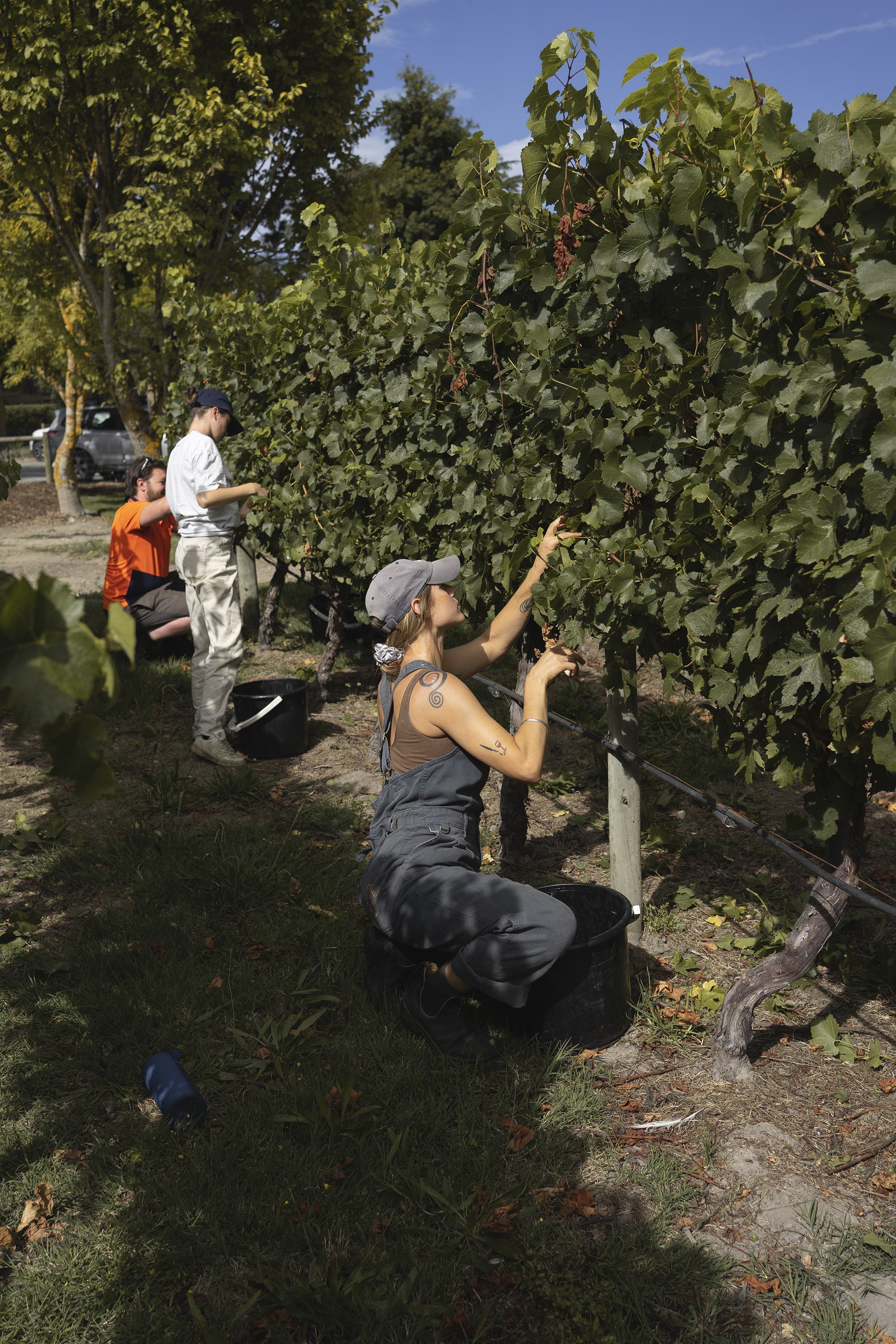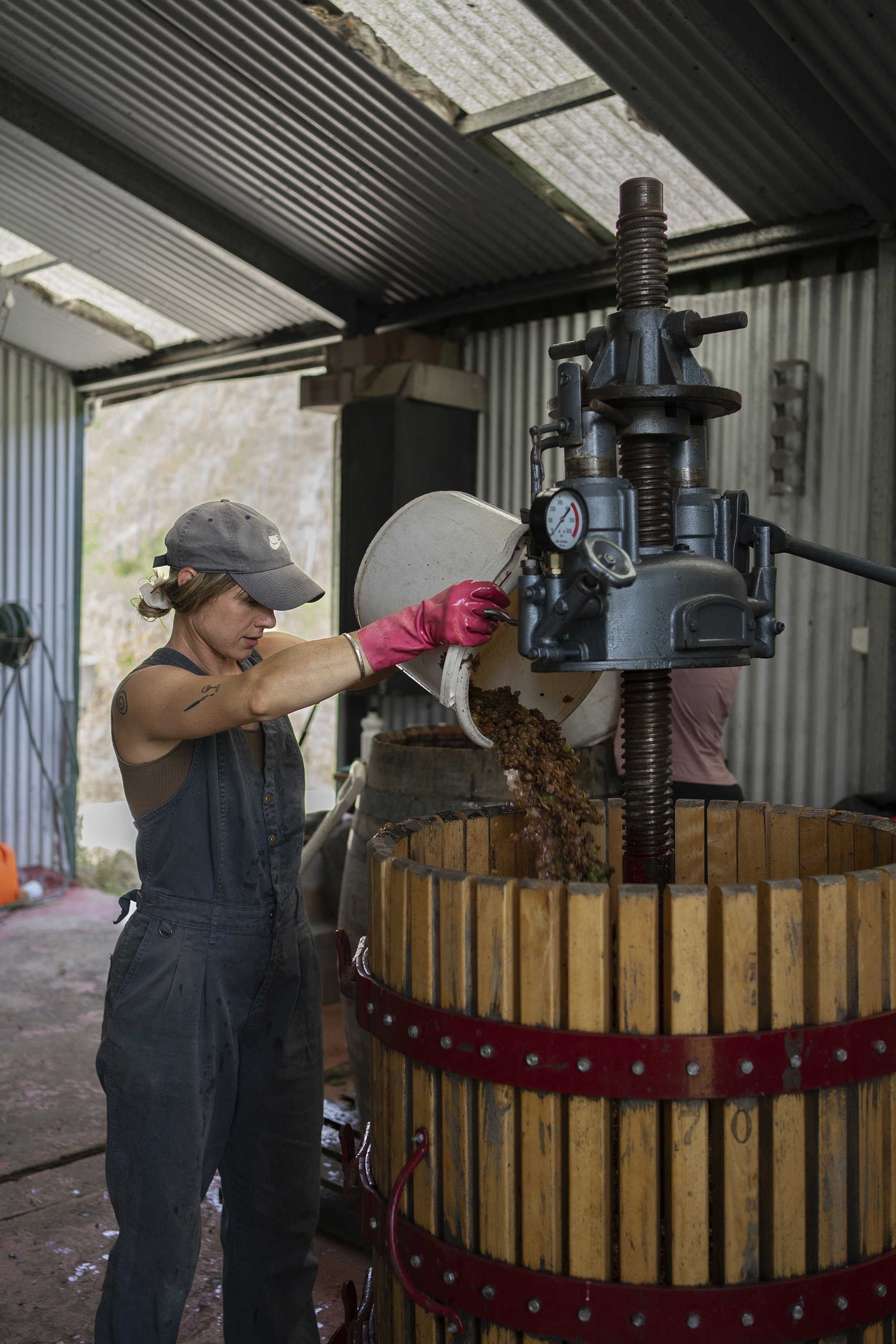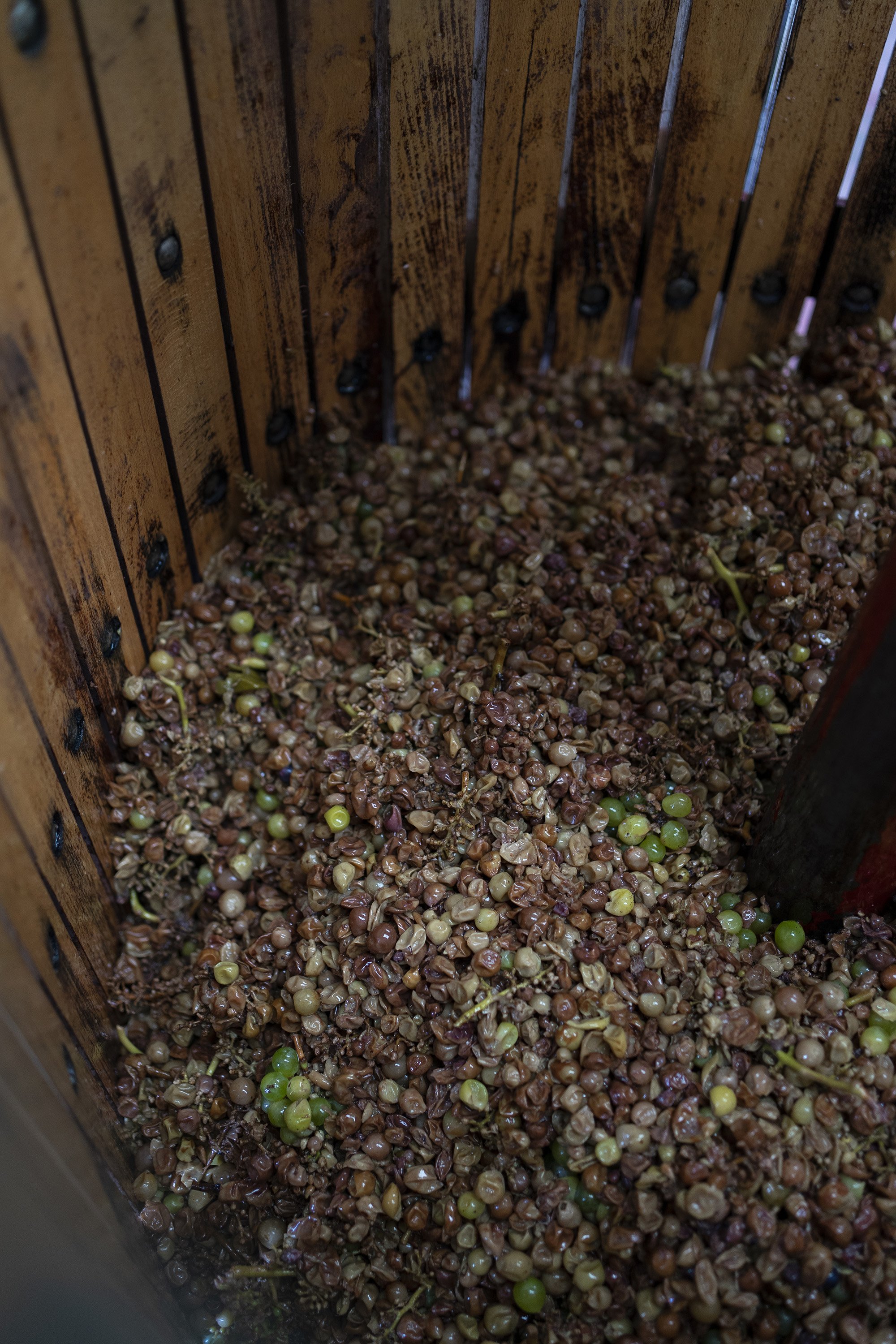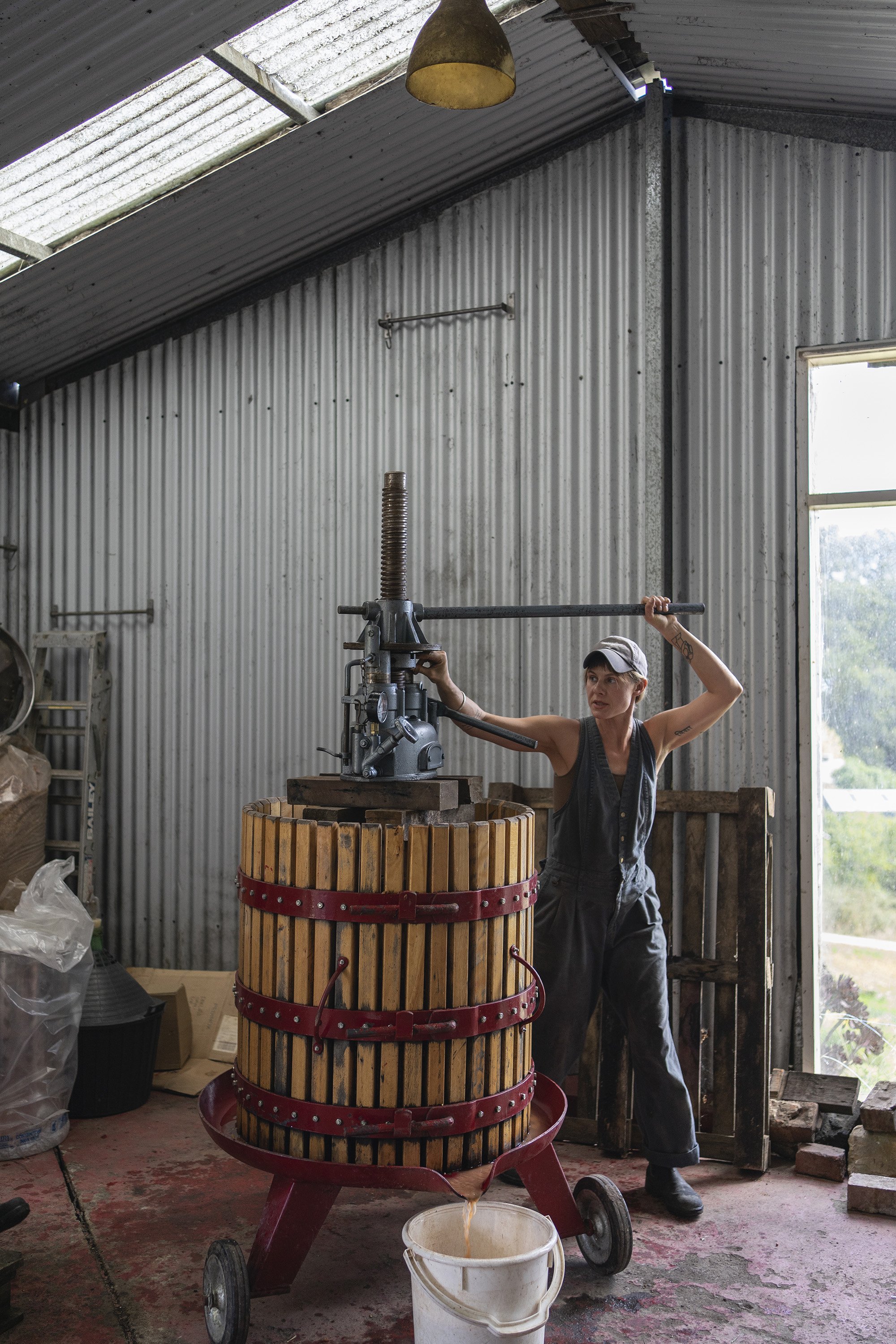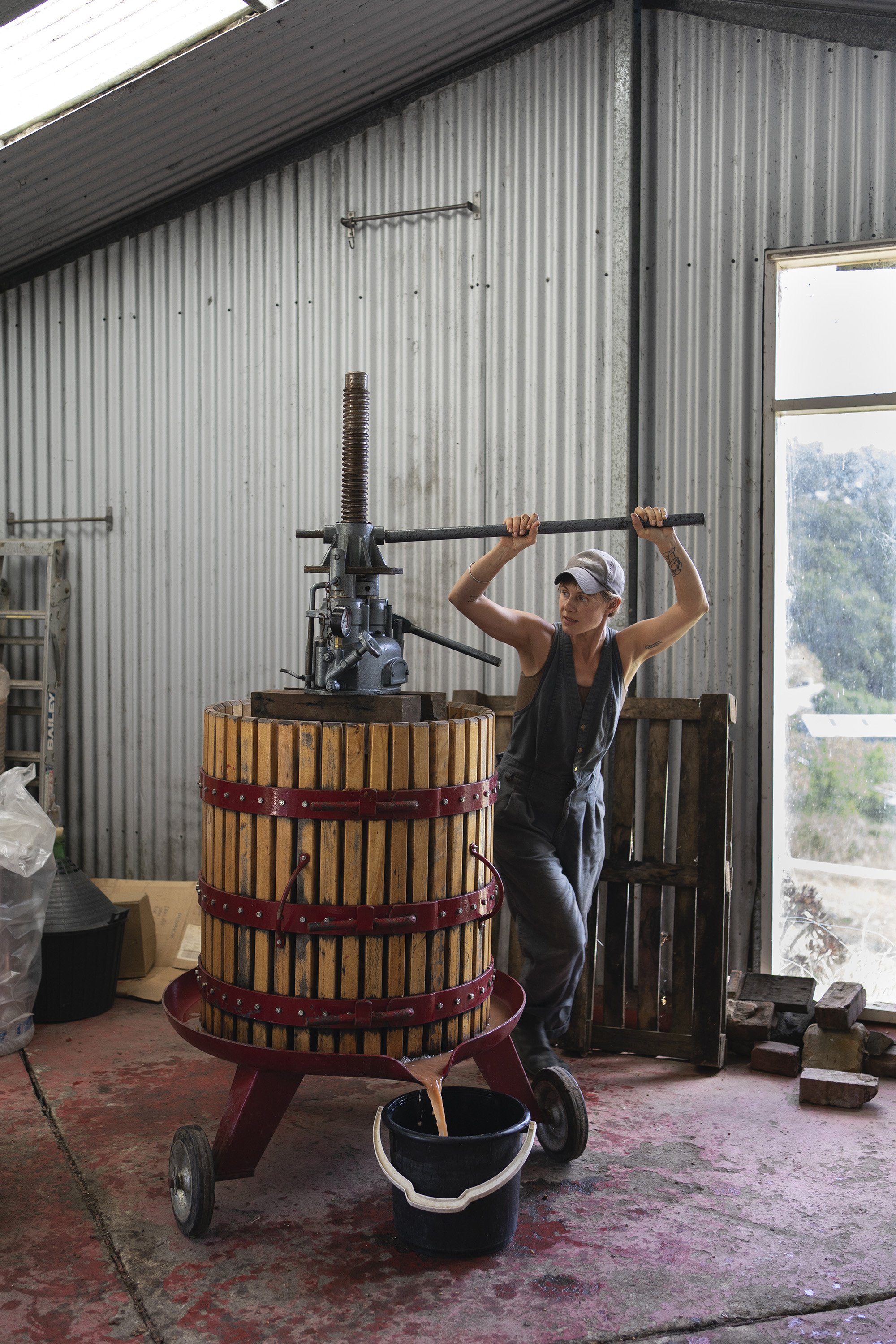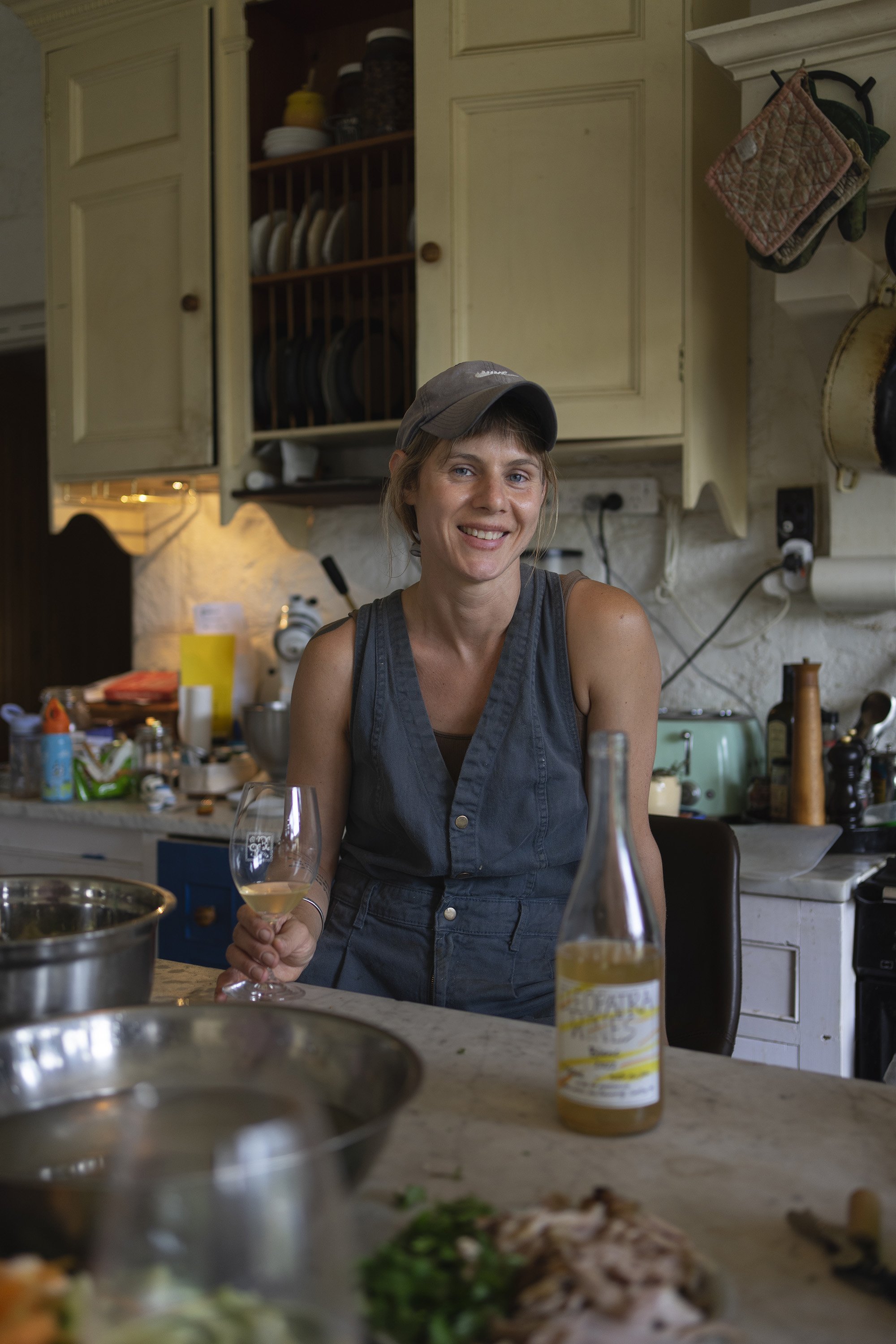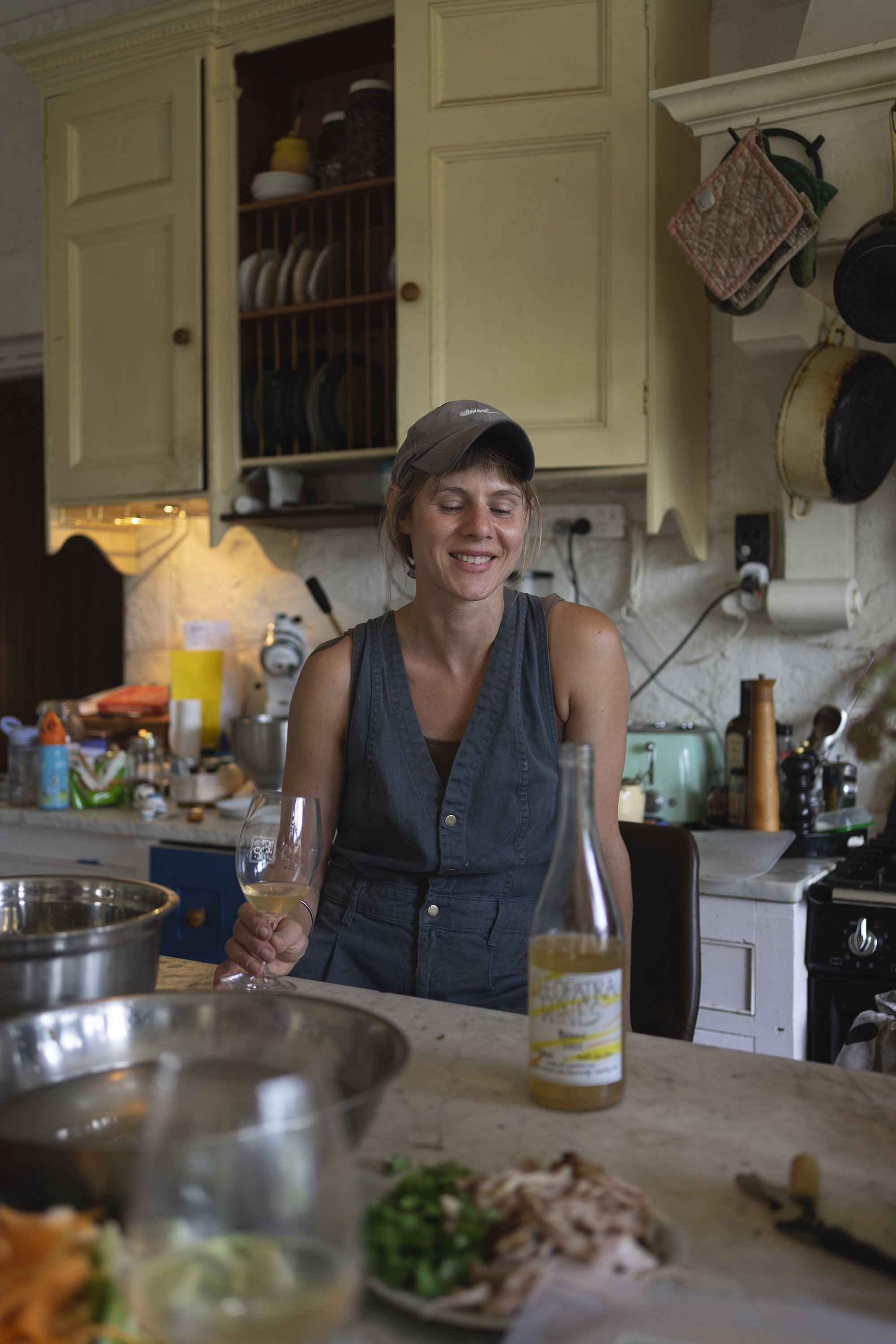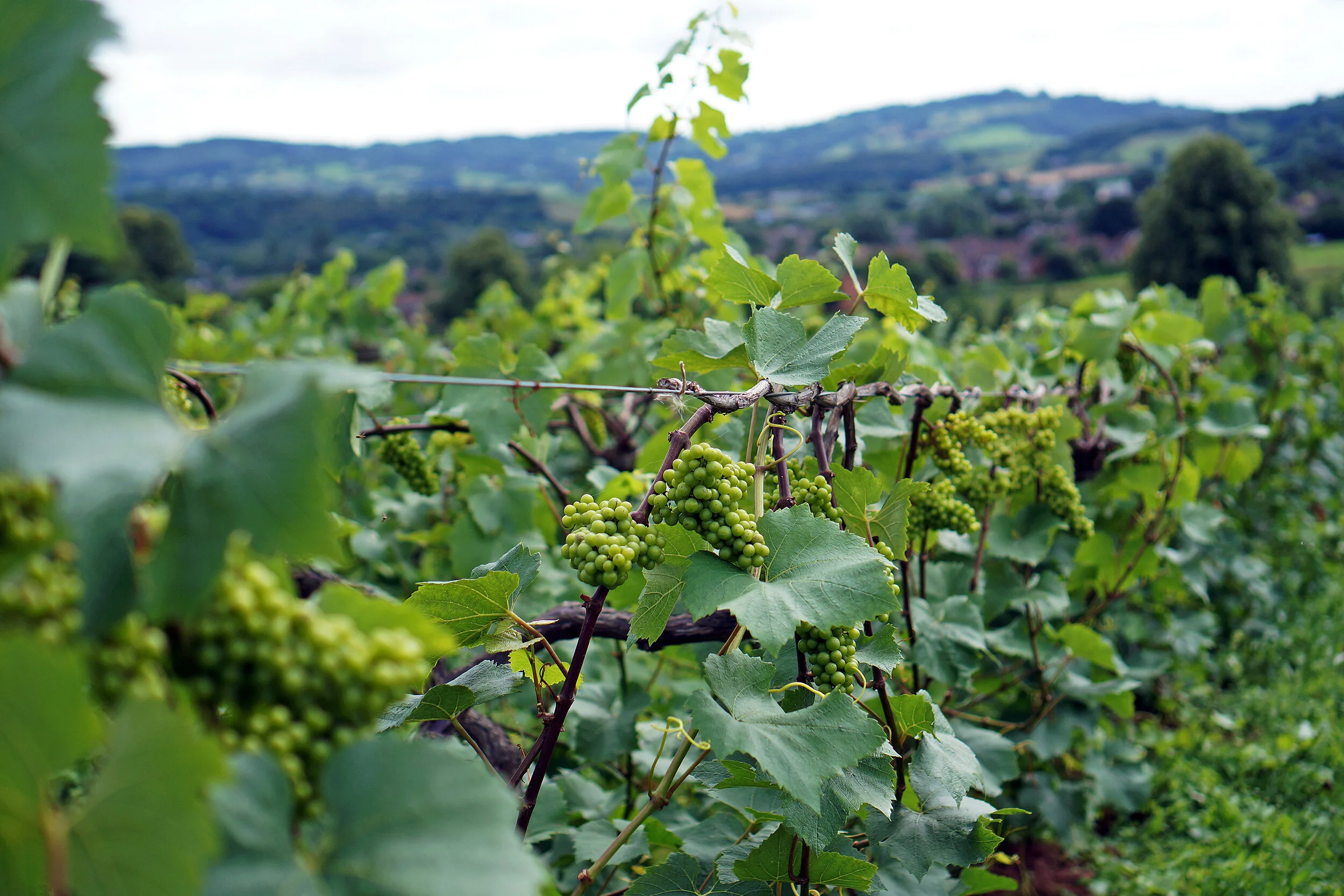Your Harvest Day — Making Natural Wine as a Family in Australia
07:40
You and your daughter awake in a silent house; your partner is already at the vineyard with the picking crew. In your pre-parenthood days, you would go together, but that seems like a thing of the past now. Would you prefer to be picking in the chill of sunrise, wet hands, and no breakfast in your belly? Or to be assuaging a tantrum from a child who wants their daddy, who can’t decide between bacon or yoghurt, who requires coaxing into the car and a fully curated soundtrack of Raffi songs on the way to preschool? Tough call.
At any rate, you manage to leave the house—but the first stop is your shed.
Photography by Sofia Lisi
08:30
You have to do punch downs right away, it cannot be delayed. Your daughter stands on a stool and peers over the edge of the tall, wooden fermentation vat, exclaiming at the foam that bubbles up as you push, with all your might, a plunger into the recently-harvested Pinot Gris. The plunger—which resembles an actual toilet plunger—pushes down on the cap that has formed due to carbon dioxide emerging as the grapes ferment. The plunger submerges the cap into the juice below. If the cap were allowed to dry out, your wine would develop volatile acidity.
Volatile acidity? A no-go. Sure, lots of natural wines have it. VA (a cute nickname for what can be a nasty off-flavour) exists. But if you can prevent it? You will certainly do your best.
But sometimes it finds you.
As you are plunging the second fermenter, you detect that dreaded smell: vinegar. And a whiff of nail polish remover. Why is this happening? Hard to say, because you did your punch downs, but that doesn’t matter. What matters now, is fixing the problem. And the way to do that is: to press the grapes.
Grapes on skins are a literal cesspool of potential problems, flaws, and ways to ruin your wine before it is bottled. Once pressed off the skins, volatile acidity can, thankfully, quickly disappear from the juice.
08:45
You drive your daughter to preschool, before immediately turning around and returning to the farm where you and your partner live and make wine.
09:45
Back in your shed, you begin preparing the press.
Your press is not a large, whirring machine, with buttons on the side, into which you forklift the grapes. Well, you could use one of those, but you have chosen to rely upon a simpler approach, involving your arms and hands: a basket press.
““You have to do punch downs right away, it cannot be delayed.””
Made of wood and metal, the basket press is a vertical technology that is one of the oldest tools of winemaking. Yours is a hydraulic press, employing pistons to apply strong pressure on wooden blocks that lie atop the grapes. You begin assembling: First, one two three lift, with your knees and flat back, the two—very heavy—doors. They form a cage on the press, and you lock them in with metal bars. A bucket goes below the opening on the tray, and you are ready to begin loading.
You begin to dig-out, or as the French call it, décuvage—in other words, remove the grapes from their fermenter. The first few shovelfuls are easy enough, but then you reach a point where you can no longer get low enough in the tall vat, so you strip down to your underwear and climb into the wet, juicy grapes. One by one, you fill buckets and reach over the edge of the vat to tip them into the press, which you’ve conveniently placed nearby.
These grapes have been fermenting on skins for four days, and the carbon dioxide is growing strong. Deep breaths when you come up!
10:00
But oh no—the juice is about to overflow! You jump out of the vat and run, barefoot, dripping legs, to rescue the juice bucket. You heave it over to the barrel and tip it in, via a funnel. First juice in! We’re on our way.
An hour passes like this: You climb in, dig out grapes, tip them in, climb out, retrieve the bucket of juice, and pour into the barrel. Your arms burn, you have a scrape on your hand from the fermenter’s rustic edge.
But you’ve almost forgotten the most important thing: tasting! You hold a wine glass under the tray opening. The Pinot Gris juice is mildly bitter, with overtones of ripe peach, and lemon rind. Swirling, you sniff; no trace of that volatile acidity. You caught it just in time.
11:30
The vat is empty; all the grapes are in the basket press. The hard work is done. But the pressing itself hasn’t even begun. Now, you load the wooden blocks atop the grapes, forming a lattice, and then you lower the pistons and begin applying pressure. A few more bucketfuls slosh out; the rest will drip slowly over the course of the afternoon, and even through the evening.
You hear the rumble of the truck coming slowly up the drive. It holds picking bins, stacked three-high, filled with freshly picked grapes. Your partner and the intern from California wave to you as they drive by, heading for the bigger shed where your partner makes his wine.
12:00
You trudge up the hill to greet them, pull the sticky, filthy picking buckets from the truck and begin washing them, scrubbing off the grape skin grime and leaves that have stuck to the inside of the buckets. Meanwhile, the intern hops on the forklift and begins weighing bins. Two-and-a-half tonnes of Gamay picked today. Now, it’s time to process—your partner will do carbonic maceration on his Gamay, dumping the grape clusters directly into a large vat and sealing it, allowing the grapes to ferment from within.
12:15
You shove food into your face. Carrot, hummus, cheese, wrap. Chew. Swallow.
13:00
Two bins of Gamay—a half-tonne—have been delivered to your shed, so you go back down the hill and begin shovelling the grapes into the same fermenter you just dug out. You strip off your pants again, jumping on the grapes little by little, ensuring there is as much free-run juice as possible to help them ferment happily.
Your legs are starting to feel sore. Your breath is intense and quick. You are tired, but adrenaline is keeping you going. This is not even the peak of harvest. You need to conserve energy, because next week the Semillon, Merlot, and Cabernet Franc will all be ready.
It is one of the rainiest seasons you’ve ever seen or heard of, and winemakers are anxiously racing against the threat of mildew and rot—the two inevitable results of rain falling on grapevines. Not to mention the birds and the kangaroos, constant predators of your fruits who find their ways past fences and through the netting, so much do they enjoy sucking the juice out of the berries or nibbling entire bunches.
14:30
You’ve emptied the bins. You rinse them out and manoeuvre them outside the winery. Cover the newly-filled fermenter of Gamay. Tomorrow morning you’ll come down here to do… you guessed it! Punch downs on the Gamay!
Check on the press—see if you can get the pistons down one more time. What’s that sound?
It’s wood, splitting.
You’ve broken the blocks on your basket press.
15:00
You’re on the phone with a friend who works as an arborist. An incredibly handy profession. He knows the guy with the mill. You send the dimensions. Agree to trade a six-pack of wine in exchange. Thank you, thank you, thank you.
““Finally. You. Pour. Yourself. A. Glass. Of. Wine.””
16:00
The press is still dripping away—you’ll leave it until tomorrow, knowing that there will be a full bucket awaiting you in the morning. Every litre counts! There will also be a press to take apart, grape must to shovel into a bin and bring down to the compost, things to hose down. More punch downs—never to be forgotten, no matter how busy you are with preschool drop-off or dinner prep—dinner! What are you going to make for dinner!?
16:15
You bust open Rachel Roddy’s A to Z of Pasta, looking for something that requires nothing handmade, no soaking, no trip to the grocery store. Penne with sausage and mushrooms? How handy because mushroom foraging season began early here (all that rain) and your partner and daughter just picked some local porcini yesterday. You take sausages out of the freezer to defrost. You hop in the car to collect your daughter.
17:00
You ensure your daughter changes out of her school shoes into gum boots before she heads down to your partner’s winery, where she proceeds to taste grapes, stick her hands into buckets of juice, and climb on the forklift—a child’s dream is your constant headache. But she loves it. She knows that wine is made from grapes. She knows to call the grape must in your basket press the “cake.” She’s three and she knows these things! You know that her childhood is invaluably exciting, as much as you wish you could keep her away from any and all machinery.
18:00
Finally. You. Pour. Yourself. A. Glass. Of. Wine.
Joy Kull’s La Villana “Rosso.” A red blend from Lazio, Italy. Perfetto.
You drink it while assembling the pasta dish, listening to the whir of the large, pneumatic press coming from outside your partner’s winery. It would be so much easier if you just pressed your wine in there—you’d forklift it in and be done! You could scale up, and make more wine. But then, it wouldn’t be uniquely yours.
You value the use of your hands and feet, your muscles, working in the tiny space of your shed with virtually no equipment except buckets, a pallet jack, and the hydraulic basket press. You wouldn’t have it any other way, just as you wouldn’t trade the challenge of having to do the morning routine alone with your daughter while your husband is in the vineyard, for anything—it’s tough, but it adds up to something:
To a family, making wine exactly the way you want to. A family, growing into itself with each passing day.





